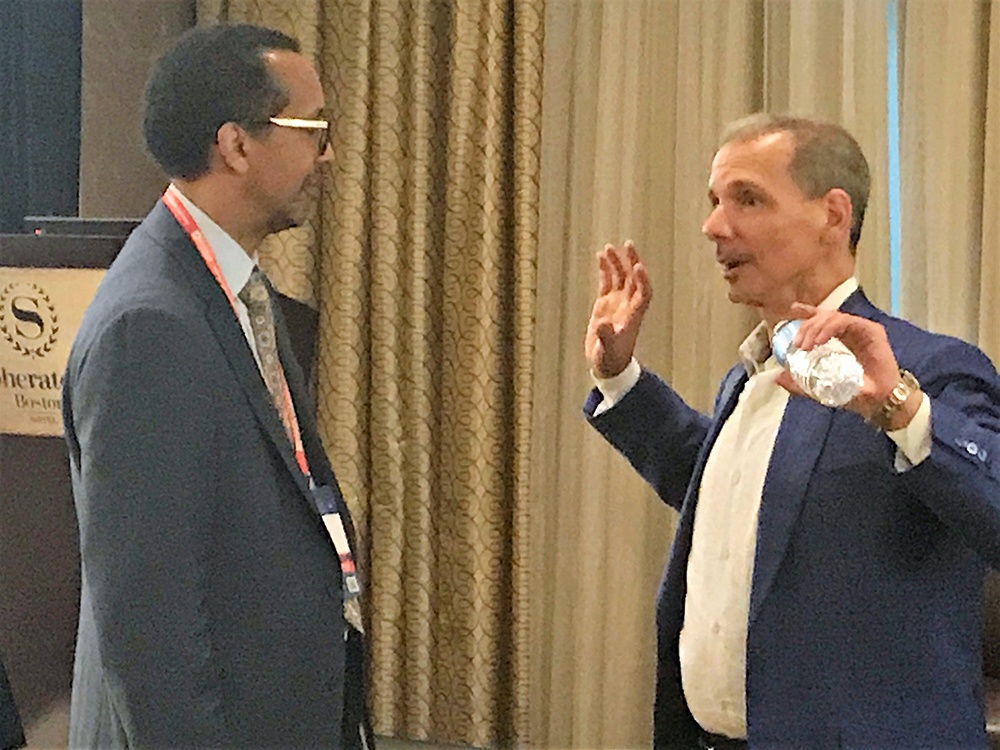Summary:
The Health Nevada Project’s developers discuss the massive volunteer response and steps taken ease privacy concerns during a Symposium session at the AAPL summit.
The Health Nevada Project’s developers discuss the massive volunteer response and steps taken ease privacy concerns during a Symposium session at the AAPL summit.
BOSTON, Mass. – The well-documented Healthy Nevada Project – a population health initiative based on genetic testing and research – is impressive not only for its massive number of participants but for the willing and enthusiastic response of those 50,000 participants.
As Tony Slonim, MD, DrPH, CPE, FAAPL and CEO of Renown Health, told a Thought Leadership Symposium audience during a panel discussion today, it took just 48 hours to sign up 10,000 people for the first stage of the project.
The results of the project should go a long way toward understanding the genetic, social and environmental factors affecting the health of residents of northern Nevada – and to subsequently aid physicians in improving their health care.
“Your DNA is not your destiny, it’s your opportunity,” Slonim said. “With it you can start making changes to improve your health.”
Before the project could even begin, however, there was the issue of how to attract so many people without violating their privacy.
For example, some participants were concerned that if genetic results were shared with insurance companies, it could result in higher premiums or canceled contracts. To ease concerns, a firewall was built to insulate research data from hospitals.

Dr. Tony Slonim, CEO of Renown Health, at right, discussed the Healthy Nevada Project during a panel at Thought Leadership Symposium on Saturday. | AAPL
As Joe Grzymski, PhD, a senior director at the Desert Research Institute and partner of Slonim’s in this project, explained: “Knowing it was going to be an issue, we endeavored to never cross the line between the research we’re doing and what’s happening at the hospital.” To accomplish this, all electronic medical records were de-identified and never introduced into the hospital “unless a patient explicitly states that they want to be contacted for something that we’ve made a finding on,” he said.
In fact, none of the researchers had access to the participants’ identities. Only Grzymski.
Although the consent form guaranteed the privacy of the participants, it also allowed them the option to make themselves available for future testing – and to be contacted by the medical research team if the genetic findings were relevant to their health.
Amazingly,” Grzymski said, “in this diverse area, greater than 95 percent of the people are consenting to both aspects. And we attribute that to the fact that we spend a significant amount of time educating our team, and then educating the individuals who come in. All of the people in Healthy Nevada project come through our study site and meet a trained clinical coordinator and get walked through the entire process. We find that that’s very helpful.”
“We trained coordinators really well, such that they can address people’s questions and their sensitivities, and understand and articulate what the informed consent process is, such that people are comfortable with what we’re doing.”
Topics
Healthcare Process
Quality Improvement
Environmental Influences
Related
Project Management for Healthcare Practices: Costs and TimingMaking Sense of Research on How People Use AIHealthcare Insights: Curated for HALM November/December 2025Recommended Reading
Strategy and Innovation
Project Management for Healthcare Practices: Costs and Timing
Strategy and Innovation
Making Sense of Research on How People Use AI
Strategy and Innovation
Healthcare Insights: Curated for HALM November/December 2025


